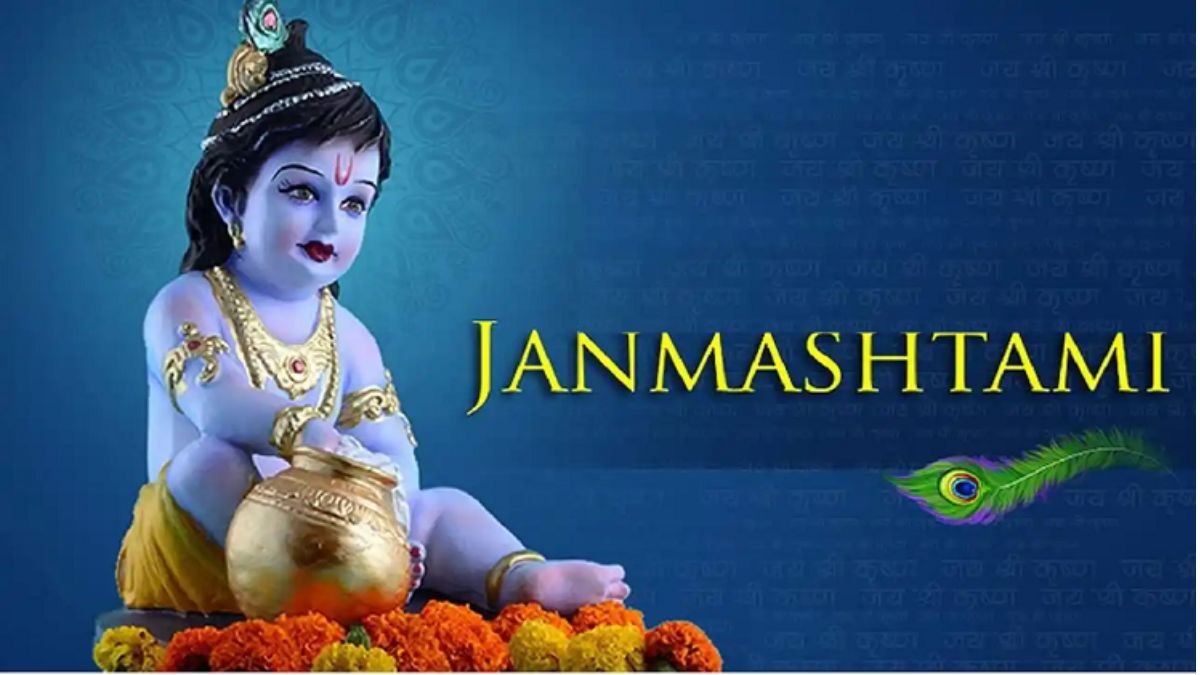Krishna Janmashtami 2024– Krishna Janmashtami, a major Hindu festival, commemorates the birth of Lord Krishna, the eighth avatar of Vishnu. Revered as the divine child, protector, and lover, Krishna is one of the most beloved deities in Hinduism.
Celebrated with fervor across India and the world, Janmashtami is known by various names such as Gokulashtami, Shrikrishna Jayanti, Satam Atham, and Ashtami. This year, we mark the 5251st birth anniversary of Lord Krishna.
Krishna Janmashtami 2024 ( Shubh Muhurat ) Auspicious Timings
Krishna Janmashtami falls on the eighth day of the dark fortnight (Krishna Paksha) in the Hindu month of Bhadrapada. In 2024, it will be celebrated on Monday, August 26th.
The most auspicious time for worship, known as the nishita puja, begins at midnight and continues until the early hours of the next day. It is believed that Lord Krishna was born at midnight, and devotees stay awake to welcome his arrival.
According to Drik Panchang, the nishita puja time for 2024 is from 12:01 AM to 12:46 AM on August 27th.
Shri Krishna Janmashtami 2024 Muhurat
5251st Birth Anniversary of Lord Krishna
Krishna Janmashtami on Monday, August 26, 2024
Nishita Puja Time – 12:01 AM to 12:45 AM, Aug 27
Duration – 00 Hours 45 Mins
Dahi Handi on Tuesday, August 27, 2024
Parana as per Dharma Shastra
Parana Time – after 03:38 PM, Aug 27
On Parana Day Rohini Nakshatra End Time – 03:38 PM
On Parana Day Ashtami got over before Sunrise
Sri Krishna Janmashtami Puja Vidhi
A Step-by-Step Guide
The puja vidhi (rituals) for Krishna Janmashtami are meticulously performed to celebrate the divine birth of Lord Krishna. Here’s a detailed guide to help you conduct this auspicious puja:
Preparations
- Morning ritual: Begin by taking a bath and wearing clean clothes.
- Evening setup: Decorate Lord Krishna’s cradle (palna) and cleanse the worship area with Gangajal (holy water from the Ganges).
Puja Rituals
- Dhyana: Commence the puja by meditating and connecting with Lord Krishna.
- Idol placement: Gently place the idol of Lord Krishna in the palna or on a wooden chowki.
- Padya: Offer water to the deity’s feet.
- Arghya: Offer water to the Lord.
- Achaman: Drink the offered water.
- Snana: Perform the ablution ceremony by pouring Panchamrit (a mixture of ghee, honey, milk, curd, and Gangajal) on the idol. Collect the remnants to be served as prasad.
- Shringaar: Adorn the deity with new clothes and accessories.
- Janeu: Offer the holy thread (janeu).
- Chandan: Apply a sandalwood paste to the deity.
- Jewelry: Decorate the deity with jewelry, a crown, peacock feathers, and a flute.
- Offerings: Offer Tulsi leaves, flowers, incense, dhoop (incense sticks), and an oil lamp.
- Bhog: Present bhog (food offering), including Lord Krishna’s favorite: Makhan Mishri (butter and sugar).
- Tambulam: Offer tambulam (betel leaf, nut, etc.).
- Dakshina: Offer dakshina (monetary offering).
- Chant Shi Krishna Chalisa
- Aarti: Aarti Kunj Bihari Ki.
- Parikrama: Perform a circumambulation around the deity.
- Prayer: Join your hands and pray for protection and blessings.
By following these steps, you can ensure a meaningful and auspicious celebration of Krishna Janmashtami.
Fasting Rules for Krishna Janmashtami
Dietary Restrictions
- No grains: Devotees should avoid consuming grains during the Janmashtami fast until it is broken the following day after sunrise.
- Ekadashi rules: Adhere to the fasting rules observed during Ekadashi.
Parana (Breaking the Fast)
- Timing: Parana should be performed at an appropriate time. For Krishna Janmashtami, it is typically done the next day after sunrise when both Ashtami Tithi and Rohini Nakshatra have ended.
- Exceptions: If either Ashtami Tithi or Rohini Nakshatra ends before sunset, the fast can be broken during the daytime. However, if neither has ended by sunset or Hindu midnight (Nishita Time), one should wait until both are over before breaking the fast.
Duration of the Fast
- Two days: Depending on the end times of Ashtami Tithi and Rohini Nakshatra, the fast might continue for two full days.
- One day: Devotees who cannot observe the fast for two days may break it the next day after sunrise. This is suggested by Hindu religious texts.
Significance of Krishna Janmashtami
Janmashtami holds immense significance as it celebrates the eternal love between the divine and his devotees. It is a time to remember Lord Krishna’s childhood tales, his divine wisdom, and his unwavering love for his followers.
Celebrations and Rituals
The festival is marked by vibrant celebrations across India. Devotees fast, perform puja, sing bhajans (devotional songs), and decorate their homes and temples with flowers and colorful cloth.
A popular tradition is the creation of a small cradle, called a “jhula,” for Lord Krishna. It is believed that he was hidden in a basket and placed in a cradle to protect him from King Kansa, his evil uncle.
Regional Variations
While the core celebrations remain similar, there are regional variations in the way Janmashtami is observed. In Mathura and Vrindavan, the birthplace of Lord Krishna, the festivities are particularly grand. In Gujarat and Maharashtra, the festival is known as Dahi Handi and involves a unique tradition of breaking a clay pot filled with curd and coins.
Conclusion
Krishna Janmashtami is a joyous occasion that brings together people of all ages and backgrounds. It is a time to celebrate the divine love of Lord Krishna and seek his blessings for a prosperous and harmonious life.

